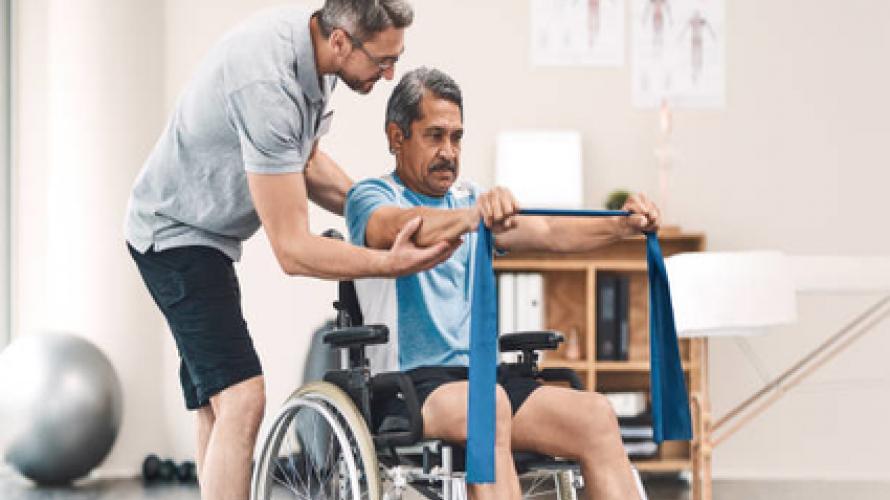
What is the study about?
Most individuals with chronic spinal cord injury (SCI) have shoulder pain. The study investigated the effects of a 12-week home exercise program (HEP) on shoulder pain and function in people with chronic SCI that focused on the supraspinatus tendon (a tendon located on the back of the shoulder). This study compared the potential changes in shoulder anatomy, pain, and functions after HEP compared to an education-only control condition (CON).
What did the study find?
Researchers found beneficial changes in several measures of shoulder pain and functioning after the HEP intervention. Researchers suggest that long-term maintenance of HEP may be needed to show improvements in shoulder pain reduction.
Who participated in the study?
The study included a total of 32 participants (17 participants in the HEP group, and 15 participants in the CON group). Participants included those with SCI of at least a year and chronic shoulder pain of moderate or greater than average intensity.
How was the study conducted?
This was a single-blind randomized controlled trial. Participants were randomized to either a 12-week standardized home exercise program (HEP) or an education-only control condition (CON). The HEP included stretching and strengthening exercises and one-on-one instruction by a physical therapist to discuss proper performance of exercises. HEP participants performed these exercises three days per week using therapy bands and hand weights. CON participants received printed materials on the shoulder and watched a one-hour video of shoulder anatomy, mechanisms of injury, and general information for dealing with shoulder pain but did not include specific shoulder exercises.
How can people use the results?
Individuals with SCI and their families, as well as researchers, can use the results of this study to better understand how this type of a home exercise intervention may improve chronic shoulder pain. Additionally, researchers and clinicians may gain insight on how to advance the findings of this study through examining effects of an earlier intervention after SCI and the significance of anatomic changes in the supraspinatus tendon.
Reference
Cardenas, D. D., Felix, E. R., Cowan, R., Orell, M. F., & Irwin, R. (2020). Effects of home exercises on shoulder pain and pathology in chronic spinal cord injury. American Journal of Physical Medicine & Rehabilitation, 99(6). [https://pubmed.ncbi.nlm.nih.gov/31851011/]